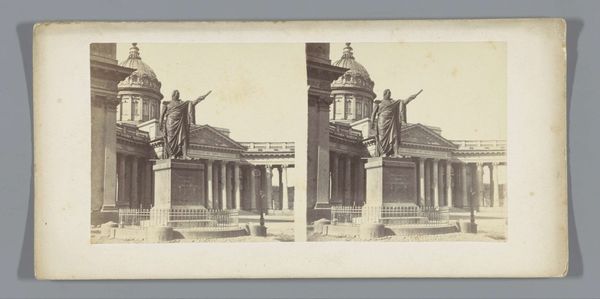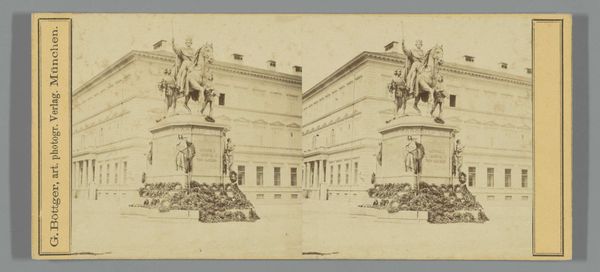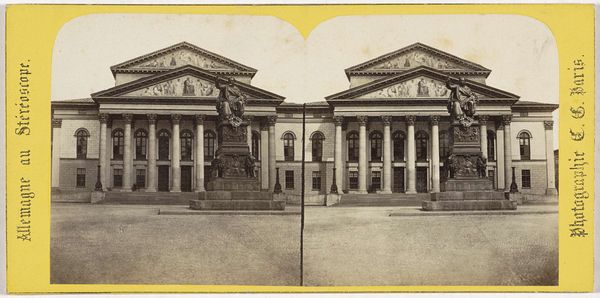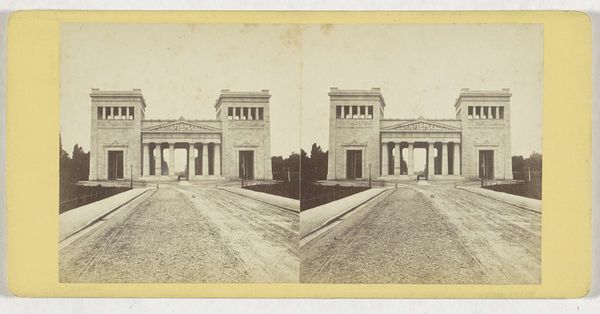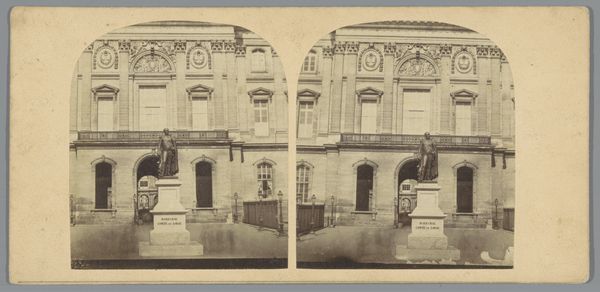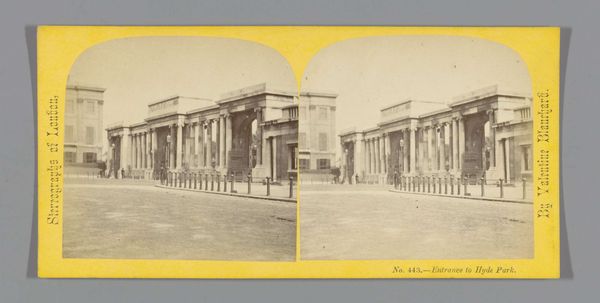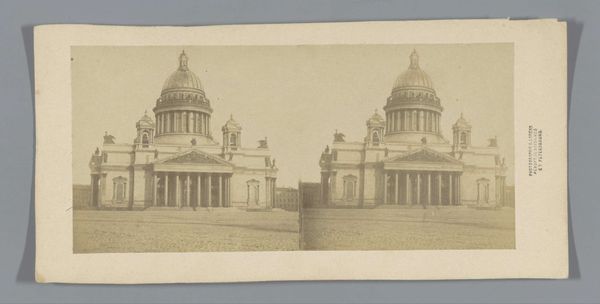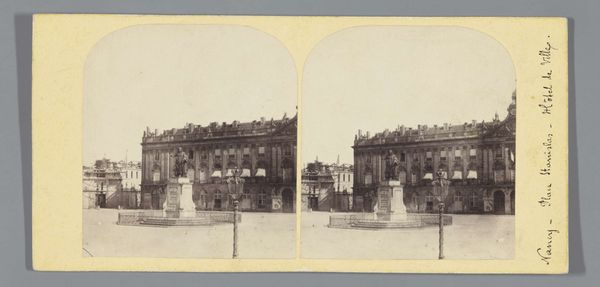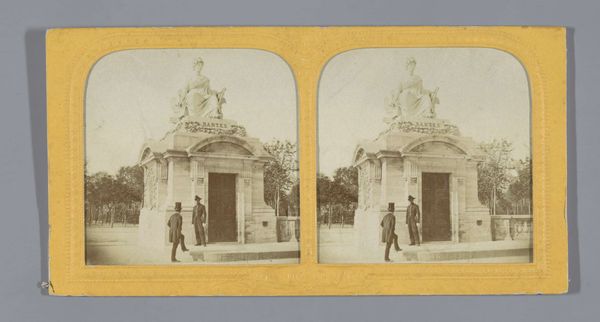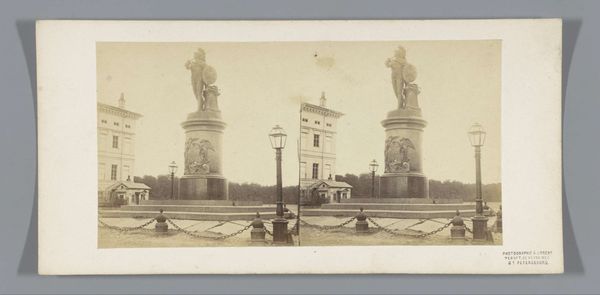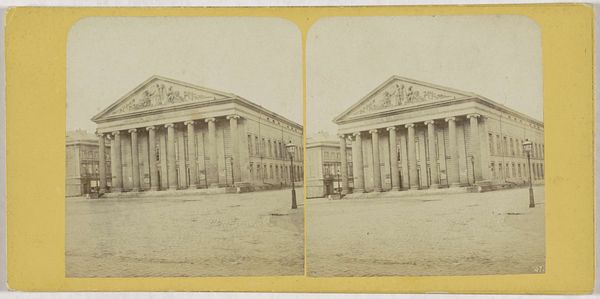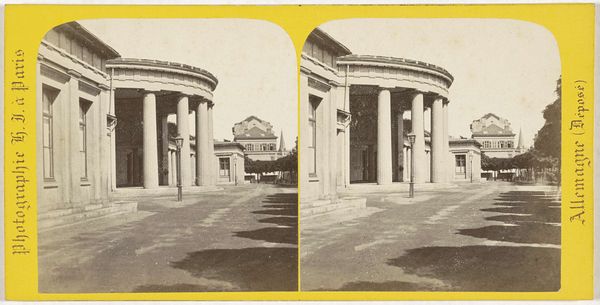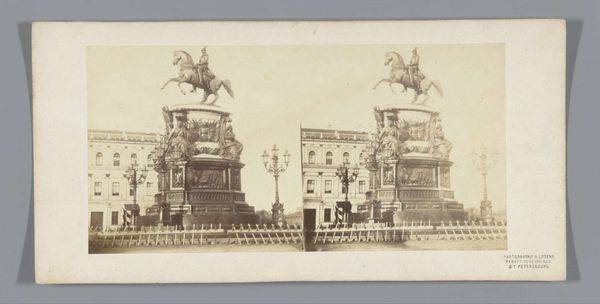
Gezicht op de Kazankathedraal in Sint-Petersburg met een monument voor veldmaarschalk Michail Koetoezov ervoor c. 1860 - 1880
0:00
0:00
Dimensions: height 85 mm, width 170 mm
Copyright: Rijks Museum: Open Domain
Curator: Here we have Alfred Lorens' photograph, taken around 1860 to 1880, entitled "View of the Kazan Cathedral in St. Petersburg with a monument to Field Marshal Mikhail Kutuzov in front." It’s a gelatin silver print, a popular photographic process of that era. Editor: My first impression? It feels strangely… doubled. Almost ghostly, like a faded memory viewed through two sets of eyes. The statue seems to command not just the city but the viewer too, with its extended arm. Curator: That doubling comes from its original use as a stereoscopic card. It was made for viewing with a special device that creates a 3D effect! As for the composition, the photographer masterfully contrasts the monument’s assertiveness with the Kazan Cathedral’s architectural grandeur, blending Romanticism and Neoclassicism. Editor: Absolutely. And focusing on that grandeur: Think of the sheer effort it took to quarry, transport, and erect those massive stone pillars! The materiality of empire on full display, celebrating both military power and architectural prowess. I wonder about the lives of the laborers whose hands shaped this image? Curator: It's a poignant reflection. And to consider the monument's subject, Field Marshal Kutuzov, famed for his role in defeating Napoleon—a leader, a symbol. The photo captures that moment when nationalism was literally being built into the urban landscape. Editor: The use of the gelatin silver print itself adds another layer. The process allowed for mass production and distribution, taking what was once seen by a selected few in person, and disseminating the symbols of Russian power far and wide. What was this access really affording society at the time? Curator: An excellent point. It also highlights photography’s democratic potential, giving ordinary people access to grand monuments, shaping perceptions and creating a sense of collective identity. The artist isn't only documenting, they are shaping how this reality is perceived. Editor: But the sepia tones mute the ambition. The dream, and maybe, its limitations. All empires fall to dust, even photochemically! Curator: (chuckles) Indeed. Lorens’ photo offers a timeless intersection—of ambition, artistry, and the enduring materiality that binds our understanding of history. Editor: A poignant observation. One leaves pondering the very idea of national heroes immortalized by materials shaped through social hierarchies we still feel today.
Comments
No comments
Be the first to comment and join the conversation on the ultimate creative platform.
